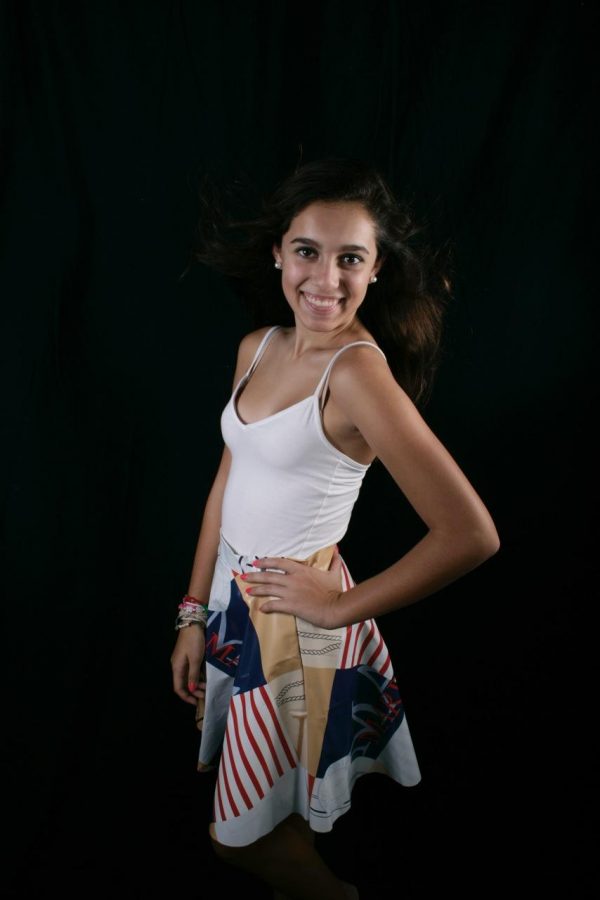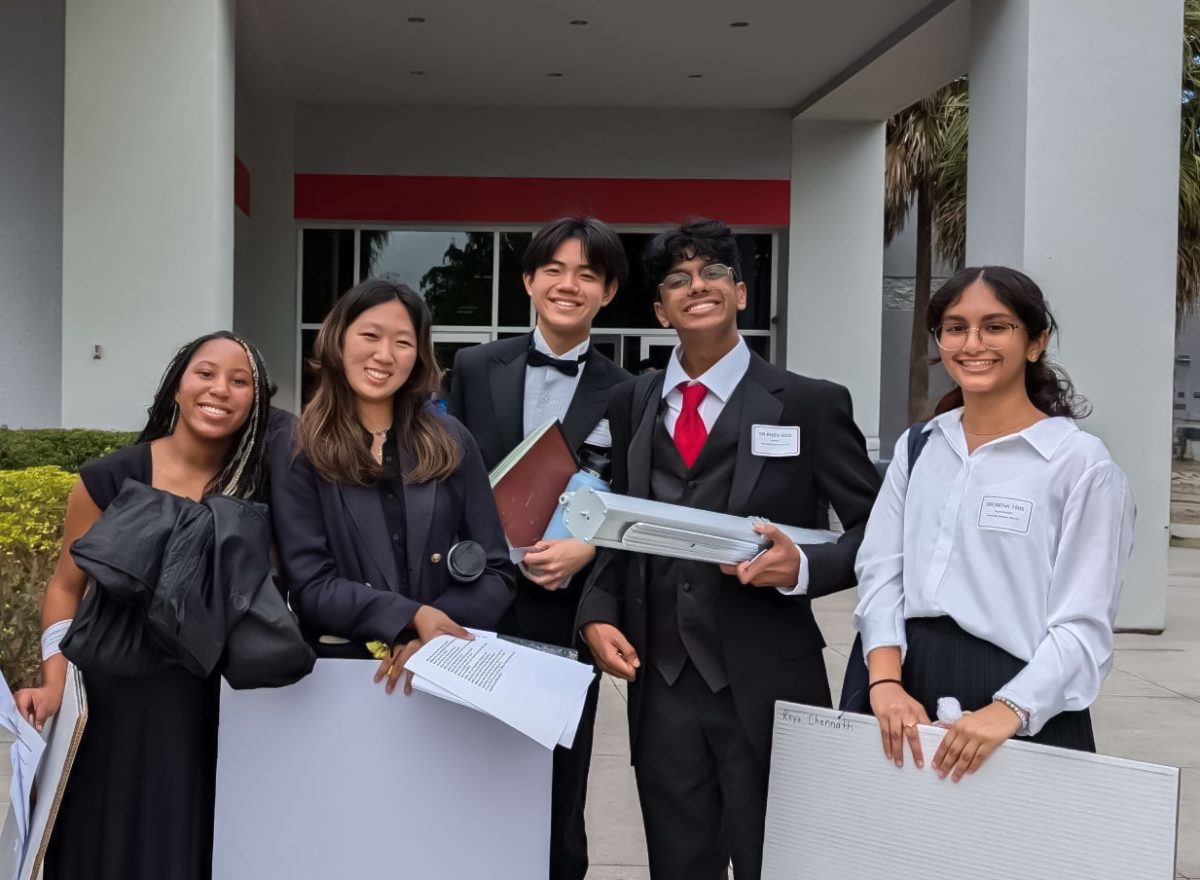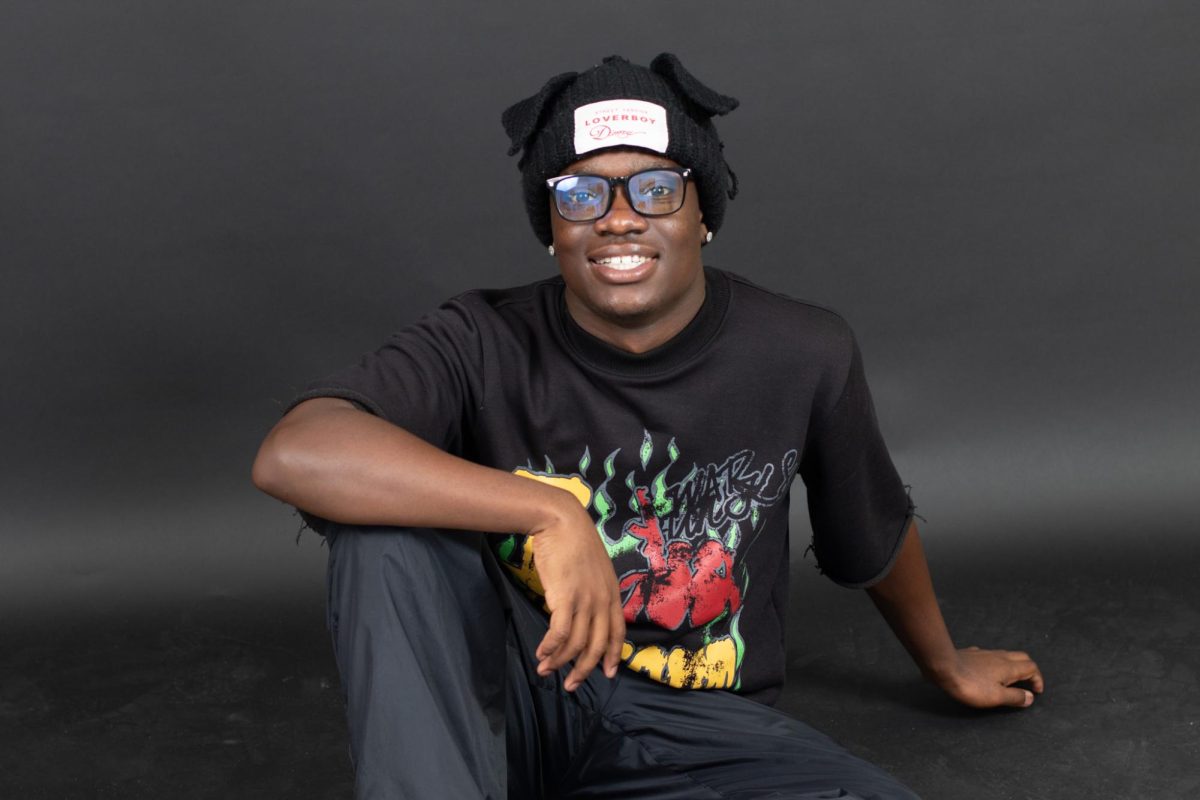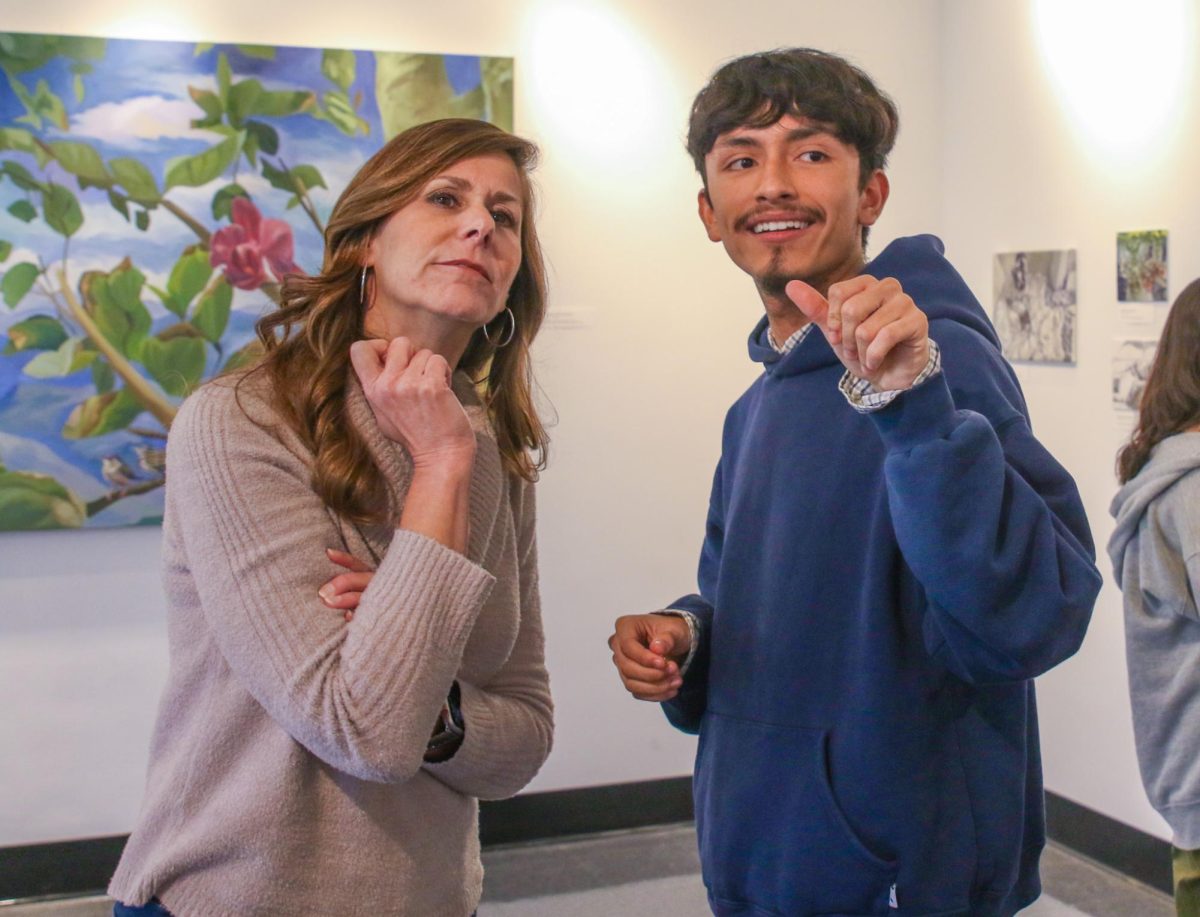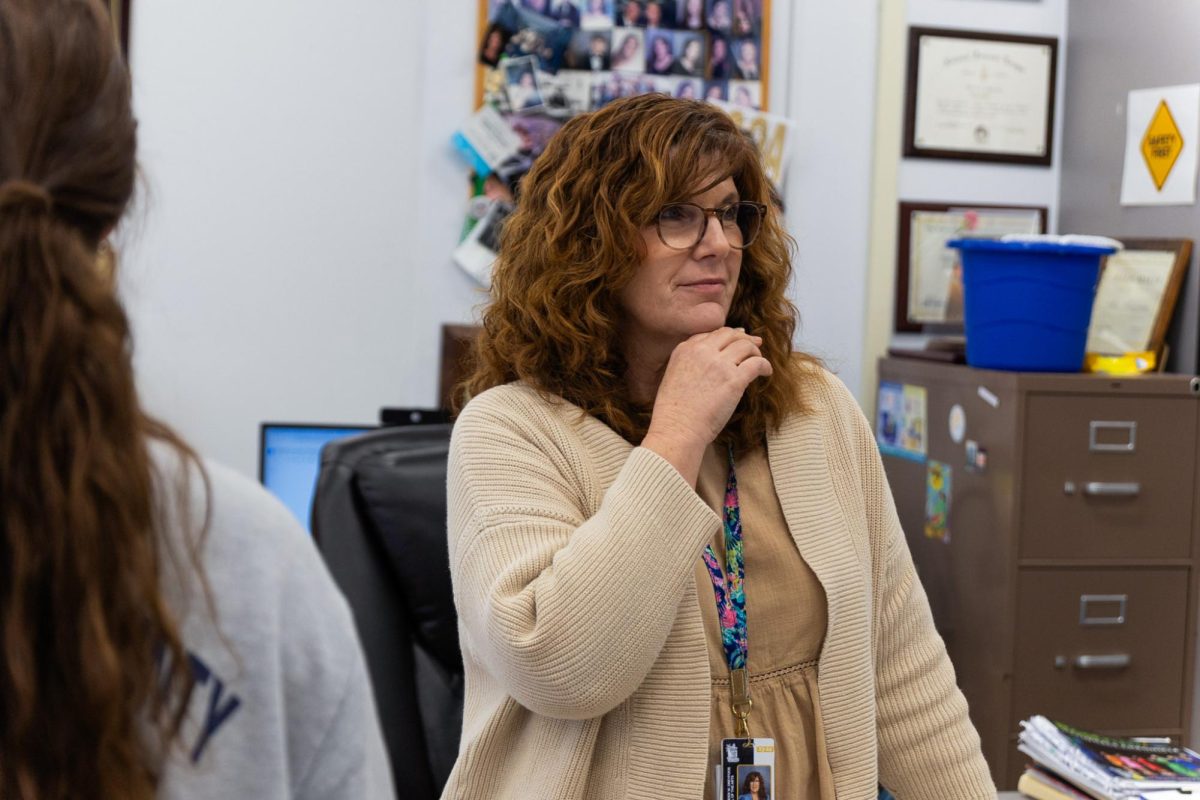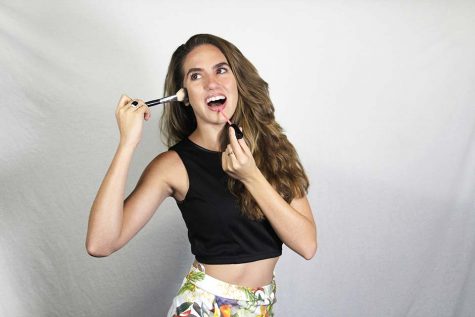Seasonal trends fall out of place and then spring into action. As much of a struggle it is to get up in the morning and wear a new trendy outfit every day, it’s even more of a struggle to be on top trend while still having your own sense of originality. Visual sophomore Emily Miller has found a way to take her artistic ability and put her own spin on one recent Florida trend: the circle skirt. A true fashionista like Miller can always predict when one of these trends comes along and then set them.
“I noticed this trend at the beginning of my freshman year,” Miller said. “I knew that if I were to make my own the public would love them since everyone was going to start to wear them.”
“My creation process began over the summer. It started when I had to make a summer project, so I decided to make garment pieces which included a crop top and a maxi skirt,” Miller said. “After I finished I realized that using the same process I could make smaller ‘skater’ or ‘circle skirts’.”
For Miller the skirts represent wearable art and whenever she wears them, it’s like she’s walking the runway as a performance artist.
“I made [the skirts] solely for the purpose of wearing them out. I can’t let something that I worked so hard on just sit in my closet,” said Miller. “I tend to wear my skirts everywhere and anywhere I can.”
Weather plays a major factor in the trend report, especially in Florida, and since this trend did start in the beginning of the warmest season versatility was a major part of the design process.
“My skirts can obviously be worn at any time in this Florida weather. During the summer they were great because they [were made] light and breezy, based on their material,” Miller said.
Miller tends to vary her use of fabrics using different more unique fabrics than the ones she sees in stores.
“I most often see them in denim or some other stretchy material, but part of making something on your own and making it unique is doing what would be unexpected. I have experimented with different fabrics and seen how they work with my everyday life and how people have reacted to them,” Miller said.
Miller did her research and was able to observe how other stores made their skirts.
“I have seen [the trendy staples] mostly from American Apparel and most of the skirts they sell are really short and very expensive for the small amount of product they’re selling. Since that’s the case I have altered both of those factors to work for me personally,” said Miller.
The subject of the skirt length kept popping up. Like I always said it’s not the item that’s being worn that’s the issue, it’s how people are wearing it.
“There are always those issues on length, and they are to be solved by the buyer. I don’t feel as if that is the producers’ problem. They [producers] make the product and sell it. The buyer is the one who incorporates it in their personal style and everyday life.”
“Mostly pre-teens, teens, and young adults are buying and wearing the skirts; middle school and high school girls. The [producers] make their clothes work for what that target market age group is mainly trying to hang in their closets.” Miller plans on continuing filling her closet with her skirts and more of her own designs.
The Process:
“The material I start off with obviously affects the time it takes and the problems I run into. I mainly use the same process and it takes me about 2-3 hours. I start with a pattern that I have cut that is pre measured to my waist and the length I like. I place the pattern down on fabric folded in half so that there are two pieces of cloth, one under the other. I then trace the pattern on and cut it out. I turn the fabric so the halves face each other and sew one side, sew half way up the other, then turn it again so it is facing the correct way to put in the waist band and the zipper. In the end, I hem the bottom and fix up any problems or loose threads. I always have a measuring tape, scissors, and a marking pen next to me. I have to give credit to my grandmother though for teaching me how to make skirts. After she taught me I found my own way of making them and experimenting with different materials and even taught myself how to make them for other people by adjusting the measurements. The measurements set the foundation for the rest of the garment. I absolutely love it and plan to never stop making the skirts.”























































